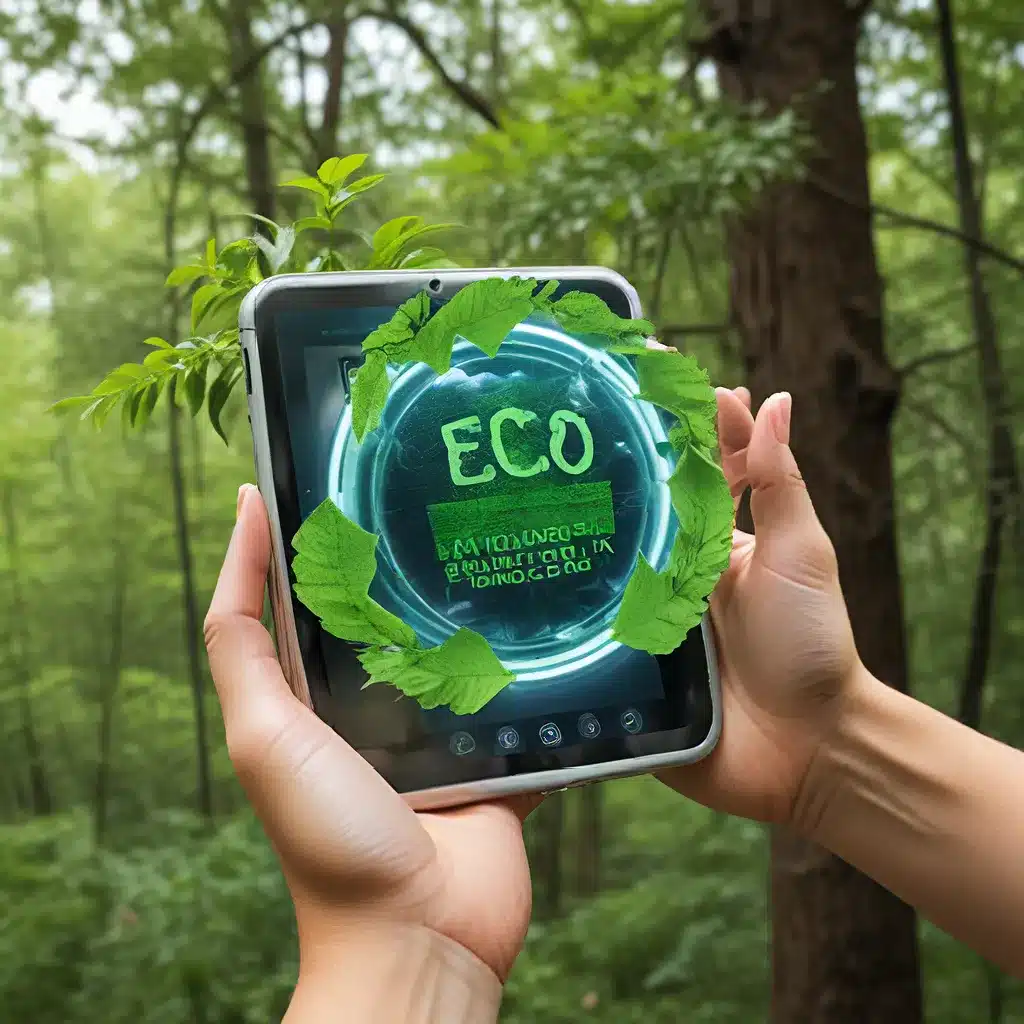
In the ever-evolving landscape of environmental stewardship, a remarkable transformation is unfolding. Thanks to the relentless march of technological innovation, the delivery of environmental services is undergoing a seismic shift. Gone are the days when the preservation of our planet’s precious resources was perceived as a daunting, almost insurmountable task. Today, we are witness to a new era where technology is empowering individuals, communities, and businesses alike to become active participants in the quest for a more sustainable future.
Harnessing the Power of Digital Tools
As I delve into this captivating narrative, I can’t help but marvel at the ways in which technology is redefining our approach to environmental challenges. Take, for instance, the advancements in Google’s suite of sustainability-focused tools. With features like fuel-efficient routing in Google Maps, carbon emission estimates for flights, and the ability to find eco-friendly hotel options, the tech giant is putting the power of sustainability-driven decision-making right at our fingertips.
“I remember the day I was planning a work trip and decided to try out Google’s carbon emissions estimates for flights,” I recall, “It was a game-changer. I was able to make an informed choice that not only saved me money but also reduced my environmental impact. It’s incredible how technology can empower us to make more sustainable choices, even in our day-to-day lives.”
But the impact of these digital tools extends far beyond individual behavior. Cities and municipalities are also leveraging the power of technology to drive systemic change. Through Google’s Environmental Insights Explorer, local governments can access valuable data and insights to inform their sustainability strategies, from optimizing transportation networks to implementing renewable energy initiatives.
Democratizing Environmental Data
One of the most remarkable aspects of this technological revolution is the way it is democratizing access to environmental data. Gone are the days when such information was confined to the ivory towers of academia or the closed-door meetings of policymakers. Today, anyone with an internet connection can explore a wealth of data and insights that were once the exclusive domain of experts.
“I remember when I first discovered the Google Earth Engine,” I muse, “It was like unlocking a treasure trove of environmental intelligence. I could visualize global trends, track deforestation patterns, and even monitor the health of ecosystems – all with just a few clicks. It’s truly empowering to have such powerful tools at our fingertips.”
But the democratization of environmental data is not just about access – it’s also about fostering a deeper understanding and engagement with the issues at hand. By making this information more accessible and user-friendly, technology is inspiring a new generation of environmental stewards, from students to community activists.
Driving Innovation in Environmental Services
As the world grapples with the mounting challenges of climate change, water scarcity, and ecosystem degradation, the role of technology in environmental service delivery has become increasingly crucial. And the innovators in this space are not resting on their laurels.
“I recently came across a fascinating startup called 3ECO,” I share excitedly. “They’re using advanced analytics and artificial intelligence to revolutionize water treatment and environmental services. Their predictive models can identify potential issues before they even arise, allowing for proactive interventions and optimized resource allocation. It’s truly remarkable how technology is empowering these companies to tackle some of our most pressing environmental challenges.”
But the innovation doesn’t stop there. Across the industry, we’re witnessing the emergence of groundbreaking technologies that are redefining the way we approach environmental stewardship. From cutting-edge water treatment methods to innovative waste management solutions, the environmental service sector is undergoing a renaissance, fueled by the relentless drive of technologists and visionaries.
Towards a Sustainable Future
As I reflect on the remarkable advancements unfolding in the world of environmental services, I can’t help but feel a sense of optimism and empowerment. The technologies we’ve explored today are not mere tools – they are catalysts for a profound shift in the way we interact with and protect our planet.
“At Inland Waters, we’ve always been committed to environmental stewardship, but the technological revolution we’re witnessing has truly taken our efforts to new heights,” I share. “By embracing these digital innovations, we’re not only enhancing the efficiency and effectiveness of our services, but also inspiring a new generation of eco-conscious consumers and partners.”
Indeed, the future of environmental service delivery is Eco-Empowered – a future where technology and human ingenuity converge to create a more sustainable, resilient, and equitable world. As we continue to push the boundaries of what’s possible, I can’t wait to see what the next chapter holds.


